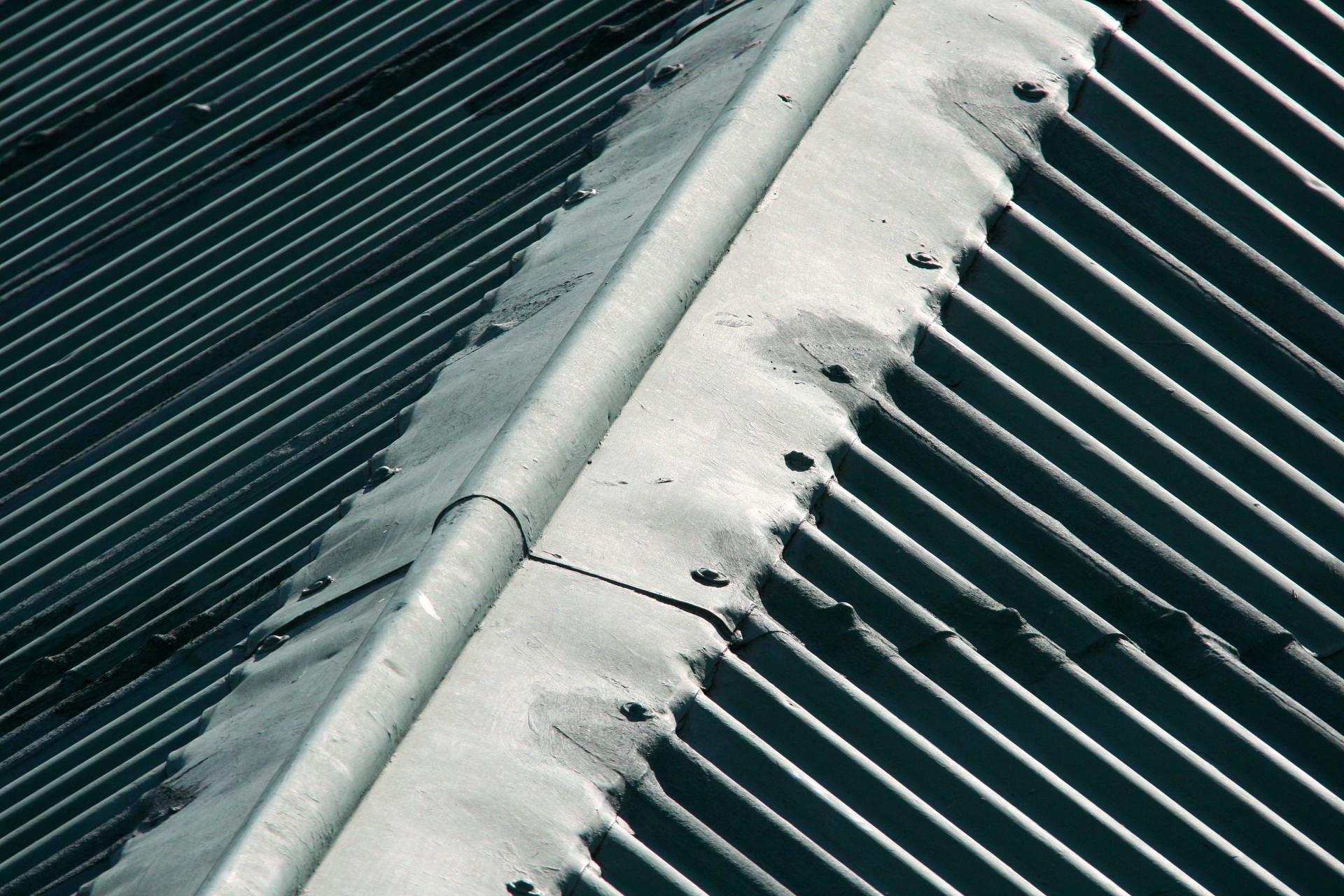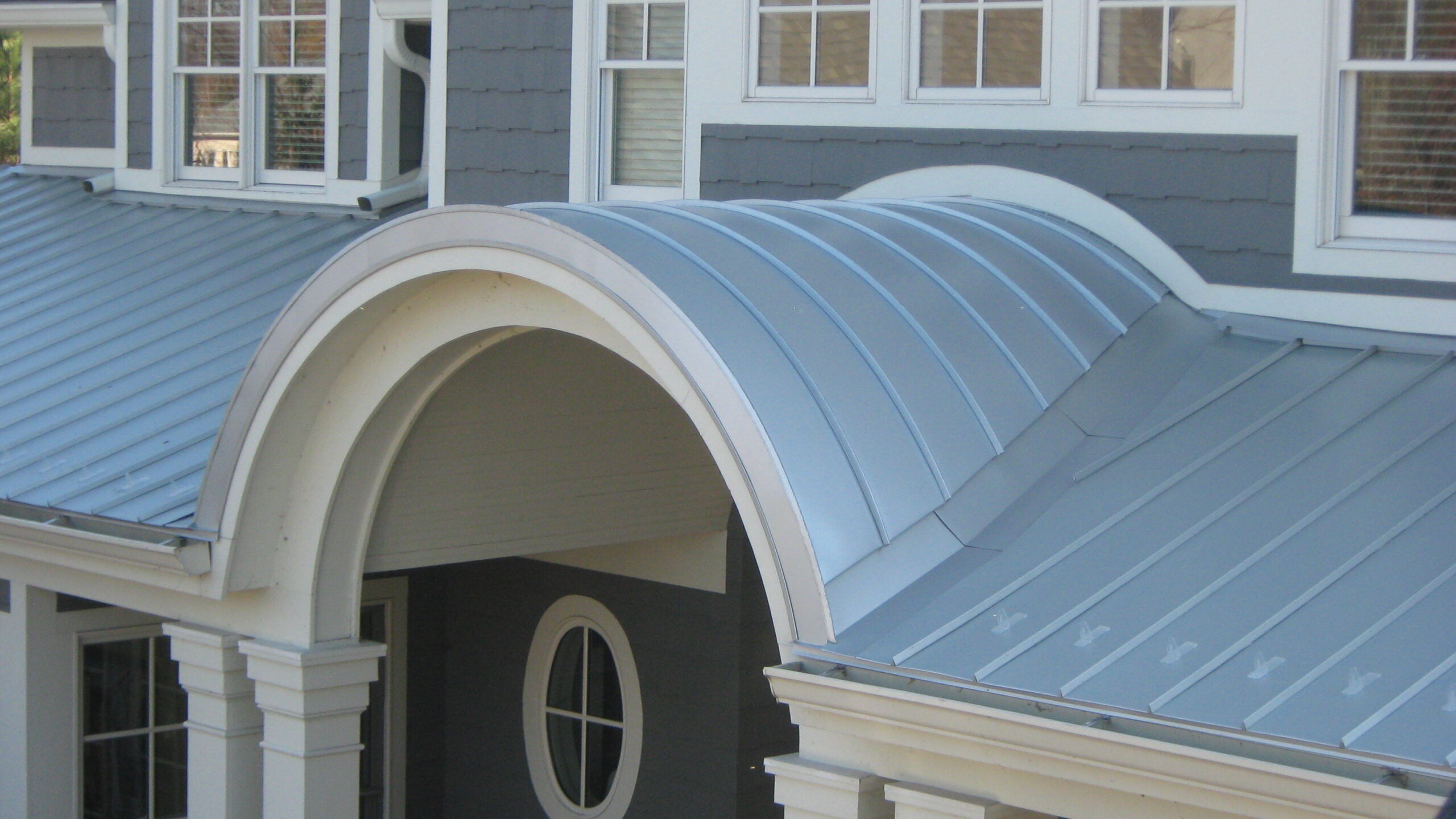In the last two decades, metal construction has experienced great growth. If we take a closer look at the buildings around us, we will notice that most of our service, industrial and commercial buildings have both a metal structure and a (corrugated) sheet metal roof and/or facade. In this article, we will focus on metal roofs and the advantages that have led to their market dominance. We will also point out some of their disadvantages and make a brief analysis of the most common problems associated with metal roofs. Finally, we will highlight one of its most common problems: Leaks associated with sheet metal roof joints, and point out some solutions to repair such problems.
Reasons for leakage
A sheet metal roof (even in the form of a corrugated metal roof) can leak for a variety of reasons, including extreme environmental conditions, installation errors, or simply deterioration of the system. The most common situations that arise on a leaking roof are.
Failed fasteners
Screws are either too tight, too loose, or off-center, allowing water to enter open areas.
Fancy seam
The seam where two panels are joined together may have been incorrectly shaped or folded by the installer.
Failed flashing
Flashing details at joints or additions on a roof, such as pipes, chimneys or valleys, are usually complex details that require precise installation. Connection points can easily become the source of a leak.
Failed caulking – Caulking or weatherstripping is used to seal out water, dirt and other debris that could affect a metal roof. If these are damaged, missing or incorrectly fitted, leakage may occur.
Wrong roof pitch
If the roof does not have the proper slope and does not allow for easy rainfall, water can enter the roof at the weakest points: Joints, penetrations, etc.
Corrosion
Most metal roofs are coated with protective paints or coatings specifically designed for corrosion protection. If this protective layer is simply blown away or dissolved, exposing the underlying metal, then corrosion begins.
Deterioration of the coating of the metal roof can be caused by several factors:
Building use
High winds, high moisture content, and activities within a building contribute to additional tensile stress on the roof. For example, repeated movements due to thermal expansion and contraction or vibration cause microscopic cracks and scratches in the roof coating and accelerate the attack of water particles, which promotes the development of corrosion.
Saltwater corrosion
Buildings near the coast are more susceptible to corrosion development. This is because salt water, an electrolyte solution, contains more dissolved ions than fresh water, which means electrons can move more easily. Since rusting involves the movement of electrons, iron rusts faster in salt water than in fresh water.
Dissimilar metals
When certain metals are compounded, a negative interaction can occur, causing early corrosion that would not otherwise occur. Therefore, it is important to analyze such situations and, if necessary, apply separating layers to avoid contact between such dissimilar materials.
Cut Edges – Edge creep occurs at the cut edges of a steel roof, i.e. minimal rust occurs at the cut edge. Many details in a standing seam metal roof have folded edges that hide the cut edge of the metal. Cut edges are susceptible to weathering, oxidation and pollutants because they are exposed and do not have a protective coating like the rest of the metal or aluminum siding.
Oil conservation
Oil canning (or stress wrinkling) is a natural phenomenon that shows up as lines or ripples in the flat areas of a metal roof or wall covering. It’s an aesthetic concern and usually doesn’t affect the panel’s performance – it’s often only visible at certain angles and under certain lighting conditions.
Oil canning is caused by internal stresses within the panel. The most common causes of oil filling are:
- Excessive tightening of fasteners
- Thermal movement not allowed
- Misalignment of the roof terrace
- Stress introduced during production
Installation error
The quality of the installation is crucial. We can point out some common installation mistakes that later affect the performance of the roof:
- Missing parts or accessories
- Wrong flashing
- Loose screws
Vulnerable areas – seams & joints
Seams between roof panels, joints at flashing details, and joints between the flashing and the roof are usually the areas where the first leaks will occur. These are also the areas on a roof that degrade faster (excluding gutters), meaning these are the areas that need to be repaired sooner to maintain the roof.
The most common problems at joints that will most likely cause leaks are.
Corrosion – Joints are typically the areas where corrosion will develop most rapidly. This happens because the coating was made fragile at the panel edges during production and cutting, or because the coating was perforated to fix the roof, etc.
Open joints – Joints tend to separate over time, and this can create an opening through which water can enter the building.
Lack of waterproofing – If a proper waterproofing solution was not used during roof installation, these joints tend to leak quickly.

Sheet metal roof waterproofing: 4 options
There are currently four options for sealing a sheet metal roof or corrugated sheet metal roof in the long term. These differ primarily in terms of effort, but also in terms of cost. Accordingly, you should consider which seal is best suited to your needs.
Bitumen thick coating
Bitumen thick coating is the shortest term and cheapest option to seal a sheet metal roof. It lasts comparatively short and the protection against leakage is in fact small. It consists of a mixture of polymer plastics as well as bitumen. After applying the affected areas, there is still a risk of rusting of the surrounding plates.
Bitumen welding sheets
Another common method is the application of bituminous welded sheeting to obviously leaking areas. This is slightly more expensive but also seals larger areas. In practice, these sheets are simply welded over the place.
Bitumen repair tape
A simple variant to seal sheet metal roofs in the short term is the application of repair tapes made of bitumen. These tapes are simply taped over the leaks and then heated with a torch. This usually happens very quickly but the life span is usually no longer than 2-3 years.
Liquid film
The most long-term solution is to seal it with a liquid spray film such as
Polyurea
. This creates a seamless, crack-resistant and flexible layer that can withstand even high loads. For more information as well as a free initial consultation, please feel free to contact us at any time.

Summary
Sheet metal roofs, especially in Europe, are exposed to the highest loads due to the seasons. Many roofs usually lose their density after a few years. There are many ways to restore them. However, we recommend the most sustainable option and that is sealing with a heavy-duty, jointless spray seal based on polyurea.